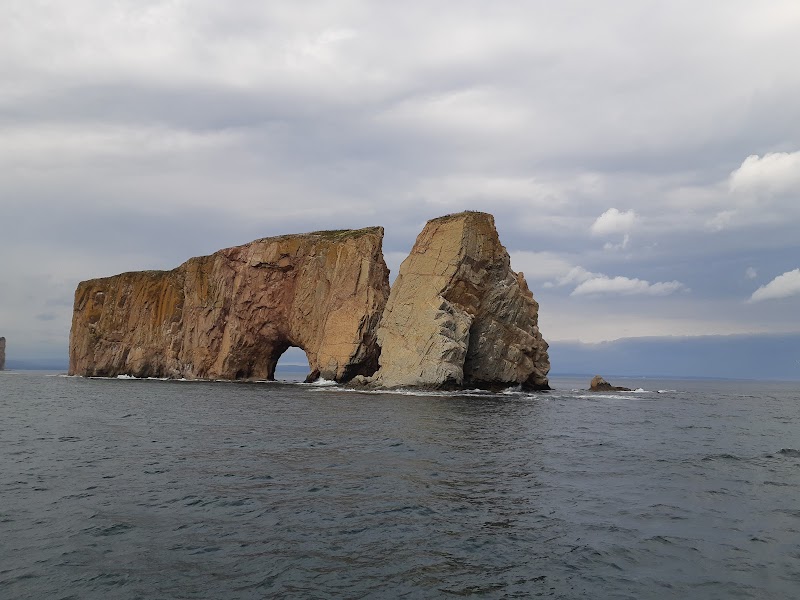
Chasing Wings: Fall Bird Migration Viewing in Godbout, Quebec
Witness the breathtaking fall bird migration along Quebec’s St. Lawrence River in Godbout. This guide offers a clear, practical approach to spotting migratory birds amid dynamic landscapes, complete with trail details and tips to help you plan your visit.
Start Early for Peak Bird Activity
Birds are most active in the morning when the air is cooler and calmer. Arrive before 8 a.m. to catch the best views and ensure quieter surroundings.
Wear Waterproof Footwear
Trails can be damp with river spray and morning dew; waterproof hiking boots with good traction keep you steady and dry.
Bring Binoculars and a Field Guide
Binoculars boost your chances of detailed observation, while a concise bird guide helps identify species on the fly.
Stay on Marked Trails
To protect fragile habitat and avoid disturbing resting birds, keep to designated paths and follow guidelines from the bird observatory.
Chasing Wings: Fall Bird Migration Viewing in Godbout, Quebec
Fall at Godbout, Quebec, summons a spectacular aerial parade as thousands of migratory birds make their way south. Here, along the edge of the St. Lawrence River, the landscape–a mix of rugged boreal forest and shoreline vistas–challenges and rewards every observer with intimate encounters and sweeping views alike. The Godbout Bird Observatory provides a practical starting point, offering educational resources and guided walks that welcome novices and seasoned birders.
The main trails span approximately 6 kilometers with modest elevation gains of up to 120 meters, carving through dense spruce and balsam fir. The terrain varies from packed dirt paths to rocky riverbank sidings where currents seem to challenge your every step. Keep your eyes peeled for raptors harnessing thermals overhead and smaller songbirds flitting almost defiantly through branches toughened by the northern winds.
Start early—morning light sharpens feather patterns and stirs bird activity. Expect cool temperatures in the range of 5–15°C during peak migration (late September through October). The forest hums with rustling leaves, while the St. Lawrence dares you closer, its water pushing relentlessly toward the Gulf. Hydration is key; carry at least 1.5 liters per person. Footwear should be sturdy and waterproof; damp patches and sudden rocky climbs require reliable grip.
For those planning your visit, the Godbout area has options for multi-day adventurers and day-trippers alike. Local lodgings in the nearby town of Forestville provide convenient access, with dining options reflecting Quebec’s rich culinary culture. Layer your clothing—a windproof shell paired with thermal mid-layers equips you for the quick shifts typical of northern maritime climates.
Observe respectfully: birds are fierce in their life-affirming migration, driven and vulnerable. Use binoculars, keep noise low, and tread lightly. The Godbout Bird Observatory hosts banding demonstrations and workshops, offering a chance to learn the science behind this natural phenomenon.
Fall migration viewing here is more than a walk; it’s an engagement with nature on the move. Whether you’re counting warblers, hawks, or the elusive kingfisher, this is a landscape in dynamic conversation with its winged travelers. Prepare well, move thoughtfully, and the rewards of Godbout’s fall chorus will resonate long after your boots leave the trail.
Nearby Trips
All Adventures
Boat Charters
Water Activities
Adventures near Godbout, Quebec
Discover the unique and memorable adventures that make Godbout, Quebec special.
Frequently Asked Questions
When is the best time of day to see migratory birds in Godbout?
Early mornings are the best—typically between sunrise and 10 a.m.—when birds are most active and thermals help raptors soar. The light is also better for spotting distinct markings.
Are guided tours available at the Godbout Bird Observatory?
Yes, the observatory offers guided walks and workshops during peak migration. Booking in advance is recommended, especially for fall migration events.
What wildlife besides birds can I expect during the fall migration?
Keep an eye out for eastern chipmunks, red foxes, and white-tailed deer, which are active in the forest. Occasionally, you may spot beaver lodges along the riverbanks.
How difficult are the trails for a beginner hiker?
Most trails are moderate—well-marked with some elevation gain—but suitable for beginners with basic fitness. Rocky sections near the river require careful footing.
Is photography allowed, and are there recommended spots?
Photography is encouraged. The riverbanks and elevated viewpoints near the observatory offer excellent vantage points for wide landscapes and close-up bird shots.
What environmental precautions should visitors take?
Stick to designated trails to avoid disturbing nesting sites and fragile undergrowth. Carry out all trash and avoid using flash photography near birds to prevent stress.
Recommended Gear
Waterproof Hiking Boots
Protect feet from wet ground and provide grip on uneven trails.
Layered Clothing
Allows adjustment to temperature shifts, wind, and possible rain.
Binoculars
Essential for clear views of birds without disturbing them.
Hydration Pack or Water Bottle (1.5L minimum)
Maintains hydration during the hike, especially when active in cool air which can mask thirst.
Local Insights
Hidden Gems
- "The lookout point at Cap du Bon Désir—less visited but offers panoramic views of the St. Lawrence and flyways."
- "Quiet coves along the lower Godbout River, where small flocks rest undisturbed."
Wildlife
- "Broad-winged Hawks"
- "Black-throated Green Warblers"
- "Belted Kingfishers"
- "Common Loons"
History
"Godbout has been a key stopover for centuries, used by Indigenous peoples and, later, European settlers familiar with the river’s crucial role in wildlife migration and trade routes."
